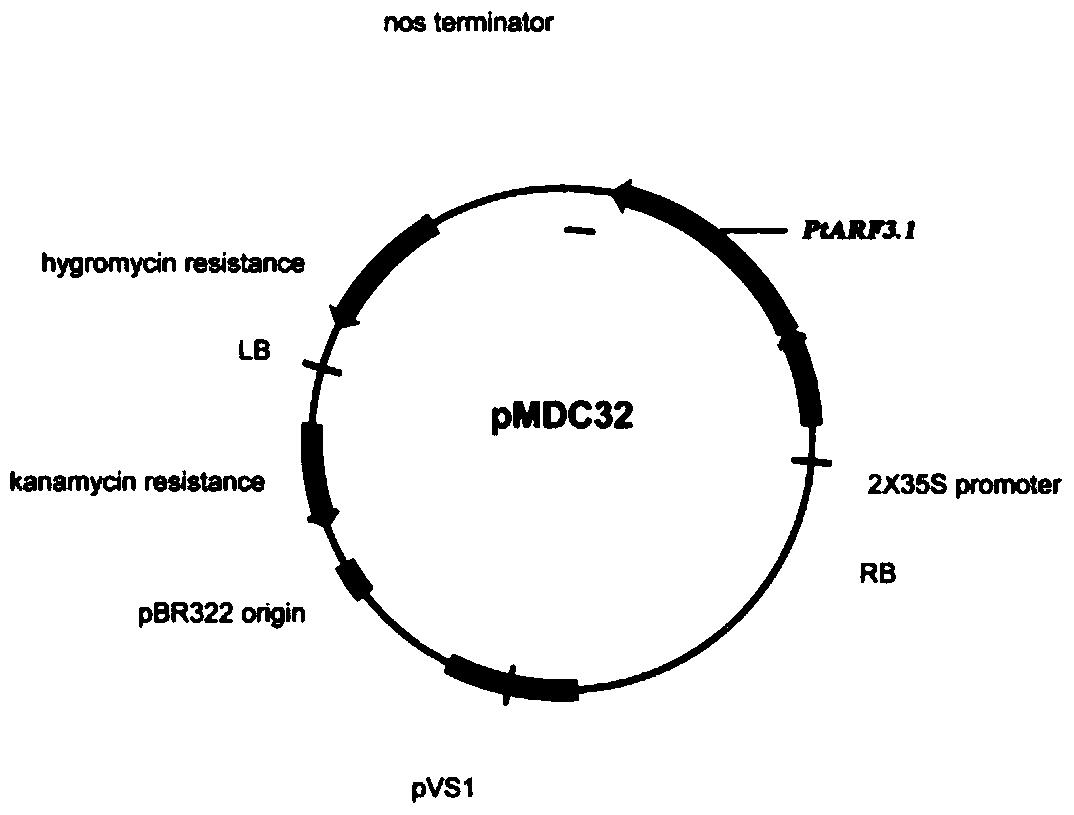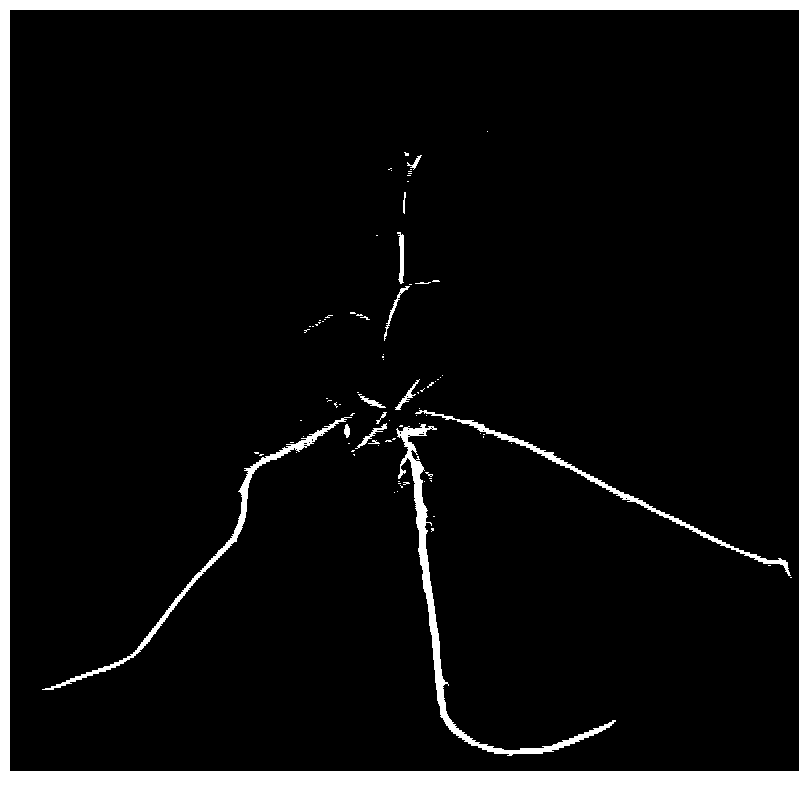An auxin response factor gene that regulates the development of poplar adventitious roots and its application
A technology of response factors and auxin, applied in application, genetic engineering, plant genetic improvement, etc., can solve the problems of gene function differentiation, loss, gene family expansion, etc., and achieve the effect of early rooting and increased number
- Summary
- Abstract
- Description
- Claims
- Application Information
AI Technical Summary
Problems solved by technology
Method used
Image
Examples
Embodiment 1
[0022] Example 1 Cloning of PtARF3.1 Gene
[0023] 84K (P.alba X P.glandulosa) Populus albadensis was used as material, and the total RNA of tissue culture plantlet 84K was extracted using RNeasy Plant Mini kit and RNase-free DNase I kit (Qiagen, Hilden, Germany). About 2.0 μg of RNA was taken from each sample to synthesize cDNA first strand by using SuperScript III first-strand synthesis system (Life Technologies, Carlsbad, CA, USA). Refer to the published Populus trichocarpa genome sequence, use Primer3 software to design primers (the amplicon includes start codon and stop codon), and perform full-length gene amplification (GATEWAY linker is introduced into the primer).
[0024] Wherein, the PtARF3.1 ORF forward primer is (such as sequence 4 in the sequence listing):
[0025] GGGGACAACTTTGTACAAAAAAGTTGGAATGATAGATCTTAACACAAC,
[0026] The PtARF3.1 ORF reverse primer is (as sequence 5 in the sequence listing):
[0027] GGCGGCCGCACAACTTTGTACAAGAAAGTTGGGTACTAAAAGCACACGATGCCAC...
Embodiment 2
[0030] Embodiment 2 PtARF3.1 gene plant expression vector construction
[0031] Utilize pathway cloning technology to construct the overexpression vector of PtARF3.1 gene, use specific PCR primer (PtARF3.1ORF primer of embodiment 1), take 84K cDNA as template, carry out PCR amplification, construct PtARF3.1 gene ORF into entry vector . The entry vector is PDNOR222.1, and the sequence is shown as sequence 6 in the sequence listing. The reaction system is Fresh PCR product80ng; PDNOR222.1vector 0.4μl; BP ClonaseⅡ enzyme mix 0.6μl; sterile ddH 2O to make up to 5 μl. The reaction procedure is: react at 25°C for 5h.
[0032] Pick positive clones from the screening culture plate for PCR detection and sequencing verification. After the entry vector with PtARF3.1 gene is linearized by mlu I restriction endonuclease, it is combined with the plant expression vector PMDC32. The sequence is shown in sequence 7 in the sequence list Shown, carry out LR reaction. The reaction system is:...
Embodiment 3
[0034] The genetic transformation of embodiment 3PtARF3.1 gene
[0035] The constructed PMDC32-PtARF3.1 overexpression vector was transformed into Agrobacterium GV3101 by electric shock method, and the PtARF3.1 gene was transferred into poplar through Agrobacterium. The transformation steps were as follows: hybrid poplar clone 84K for genetic transformation The tissue-cultured seedlings were cultured under conditions of a culture temperature of 23-25° C., a light of 16 / 8 h (day / night), and a light intensity of 50 μM m-2s-1. Agrobacterium containing PMDC32-PtARF3.1 expression vector infects 84K leaf discs at OD600=0.6-0.8. Infected leaf discs were grown on adventitious bud induction medium (SIM, Murashige-Skoog (MS) basal medium supplemented with 0.5 mg / l 6-benzyl aminopurine (6-BA) and 0.05 mg / l naphthalene acetic acid (NAA)), Co-cultivate for 3 days in the dark at a temperature of 22±2°C. The leaf discs after co-cultivation were transferred to SIM containing 3mg / L hygromyci...
PUM
 Login to View More
Login to View More Abstract
Description
Claims
Application Information
 Login to View More
Login to View More - R&D
- Intellectual Property
- Life Sciences
- Materials
- Tech Scout
- Unparalleled Data Quality
- Higher Quality Content
- 60% Fewer Hallucinations
Browse by: Latest US Patents, China's latest patents, Technical Efficacy Thesaurus, Application Domain, Technology Topic, Popular Technical Reports.
© 2025 PatSnap. All rights reserved.Legal|Privacy policy|Modern Slavery Act Transparency Statement|Sitemap|About US| Contact US: help@patsnap.com



